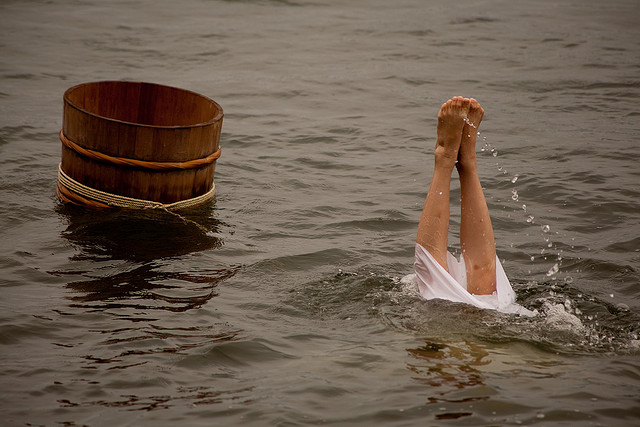 I believe you agree that a strand pearl necklace set is very tempting. But, did you know that not a few of dangers must be passed to obtain the materials for your dream jewelry?
I believe you agree that a strand pearl necklace set is very tempting. But, did you know that not a few of dangers must be passed to obtain the materials for your dream jewelry?
The job of pearl diving has nearly become obsolete but people still enjoy free diving for recreation and searching for pearls. Although a lot of fun, Pearl diving can be dangerous and in some cases even fatal because it's free-diving without equipment. Whenever swimming and diving are considered, there can be dangers of drowning. Being educated on the dangers of pearling before you go out will help ensure you not only have a good time, but that you remain safe while doing so.
The most common reason that pearl divers drown is the result of a condition known as deep water blackout. When the diver comes to the surface of the water from an exceptionally deep dive, such as 30 feet or more, they may lose consciousness due to a condition known as cerebral hypoxia. Death from drowning may result if the diver does not regain consciousness quickly.
Another common danger that is faced by anyone that is diving for pearls is known as decompression sickness. As the diver goes into the water the nitrogen and oxygen will dissolve into their body tissues. The nitrogen can create bubbles to become trapped in the lungs when the diver comes back to the surface. This can result in dizziness, loss of hearing, pain, and unconsciousness. If the diver returns to the surface too quickly and their body does not have time to diffuse these bubbles, they may experience decompression sickness.
Two pictures below show you the more or less extinct tradition of pearl diving exhibited at the Mikimoto Island pearl farming facility. However, what is shown at Mikimoto Island likely will not last long. Because of today's modern technique in pearl farming, these women's skill is no longer needed and the art of the Ama divers is soon to be lost forever.
Hypothermia is another danger that divers searching for pearls run the risk of. Many times they must dive so deeply that the water is colder than expected. Symptoms of hypothermia can include blue skin, shaking, speech that is slurred and loss of memory. In the most extreme cases, the diver may lose consciousness and can potentially end up with brain damage or suffer with a heart attack.
Another risk that not everyone considers is the danger of running into hostile sea creatures including poisonous fish, octopus, or jellyfish. Even when using a mask and a snorkel, it is difficult to see under the water, making it easy to rest a hand or foot on a dangerous creature. With the limited vision, it is also possible to run into a rocky area and get hurt.
Making yourself aware of the dangers of pearl diving before you go out and try it will help ensure that you have a safe trip and are able to enjoy it. Taking an experienced diver with you will also help make your dive an enjoyable one. Finally, those who would search for pearl necklace set must dive below ;)
What You Should Know About the Dangers of Pearling
Others : Jewelry News, Pearling
Subscribe to:
Post Comments (Atom)






0 comments:
Post a Comment